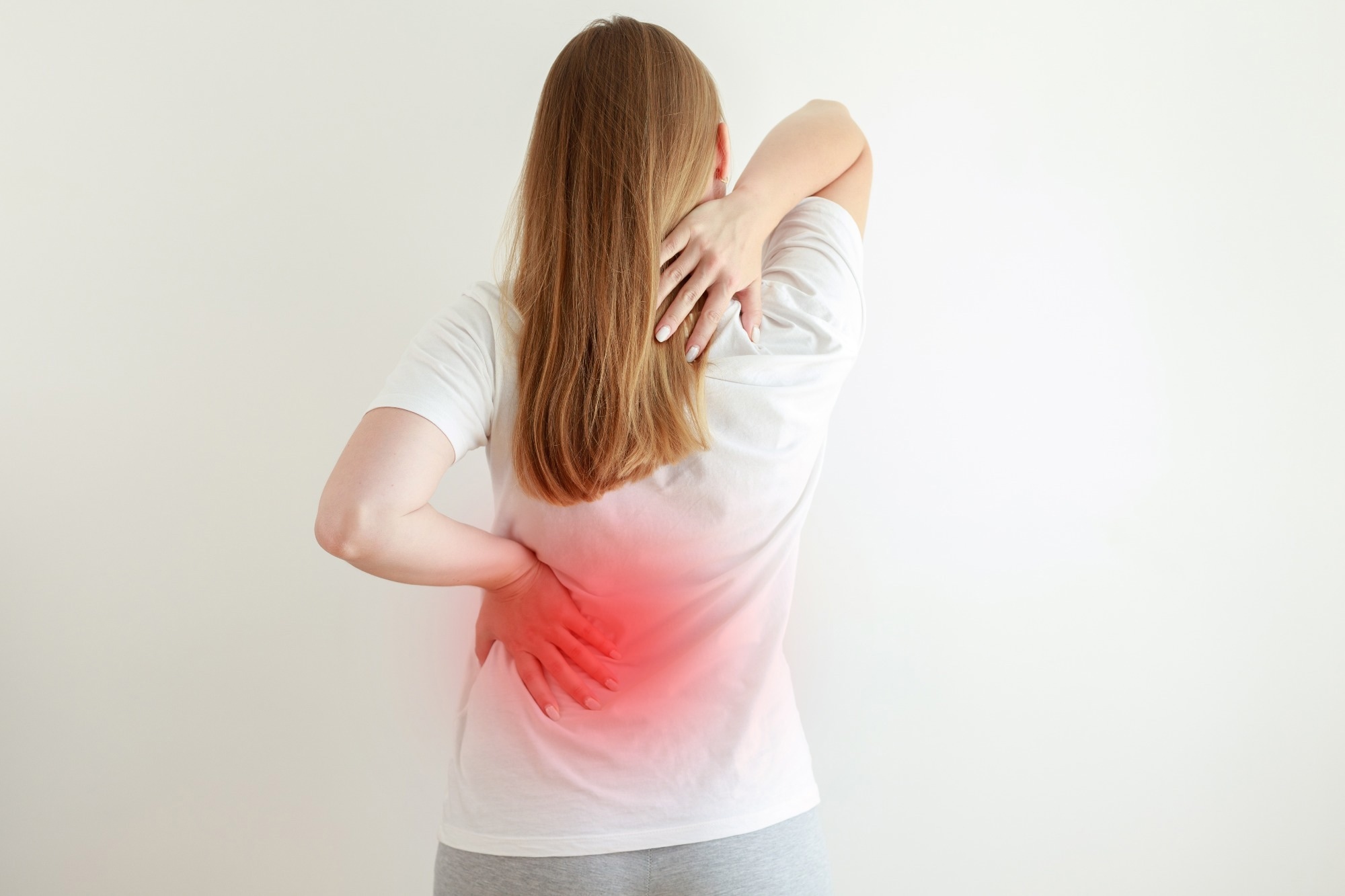In a recent study published in the journal BMC Public Health, researchers explore the relationship between composite dietary antioxidant index (CDAI) and low back pain.
 Study: Association between different composite dietary antioxidant indexes and low back pain in American women adults: a cross-sectional study from NHANES. Image Credit: Kateryna Artsybasheva / Shutterstock.com
Study: Association between different composite dietary antioxidant indexes and low back pain in American women adults: a cross-sectional study from NHANES. Image Credit: Kateryna Artsybasheva / Shutterstock.com
What causes low back pain?
Low back pain refers to several types of pain, such as nociceptive, nociplastic, non-specific, and neuropathic pain. Generally, low back pain is considered as muscle tension, stiffness, or pain localized above the inferior gluteal folds and below the costal margin.
Current estimates indicate that about 37% of adults suffer from low back pain worldwide. Notably, low back pain was ranked first in terms of loss of productivity in a 2017 study.
Several factors, including aging, obesity, depression, physical inactivity, and other lifestyle and psychosocial factors, are associated with low back pain. Oxidative stress is critical in the pathophysiology of low back pain, as it has been shown to accelerate low back pain progression.
Diet is vital in providing antioxidants; modifying dietary patterns may help reduce low back pain. CDAI is a scoring system to quantify the potential antioxidant capacity of diets. While studies have examined the relationship between CDAI and conditions such as depression, hypertension, and obesity, among others, the relationship between CDAI and low back pain remains unclear.
About the study
Participants of the National Health and Nutrition Examination Survey from four periods in the United States, including 1999-2000, 2001-2002, 2003-2004, and 2009-2010, were included in the study. Information on dietary practices was obtained through dietary recall interviews.
Antioxidant intake was evaluated using the Food and Nutrient Database for Dietary Studies (FNDDS), and CDAI was determined. Covariate data, including age, race, gender, body mass index (BMI), education, smoking, physical activity, and family poverty income ratio (PIR), were collected through physical examinations and questionnaires. Participants were grouped into quartiles based on CDAI values.
The associations between participants’ baseline characteristics and CDAI quartiles were evaluated using the t-test or chi-squared test. The association between low back pain and CDAI was assessed using crude (model 1) and adjusted logistic regression models. The second model was adjusted for age, race, and sex, whereas the third model was additionally adjusted for education, family PIR, smoking, BMI, and physical activity.
Study findings
Overall, 17,682 participants with an average age of about 45 were included in the analysis. Over 70% of participants were non-Hispanic White, whereas females constituted about 52%.
Over 34% of participants had normal BMI values, 33.9% were overweight, and 28.5% were obese. There were significant differences in gender, age, education, PIR, BMI, physical activity, race, and smoking between CDAI quartiles.
Participants in the highest quartile were more likely to be male, younger, non-Hispanic White, non-smokers, and have higher education and vigorous activity. The first and second models had a significant negative correlation between CDAI and low back pain. Each additional increment in CDAI significantly reduced low back pain prevalence.
However, this association was not observed in the third model. Individuals in the highest quartile were nearly 12% less likely to suffer from low back pain as compared to those in the lowest quartile.
A linear relationship was observed between low back pain and CDAI. In the highest quartile, females were 20% less likely to experience low back pain than those in the lowest quartile.
Among antioxidant components, vitamin E was significantly associated with low back pain in the second model. However, in the third model, selenium and zinc were independently associated with low back pain. A dose-response non-linear association of zinc, selenium, or carotene was observed with low back pain prevalence.
Conclusions
Although the fully adjusted model showed no significant associations between low back pain and CDAI, the subgroup analysis revealed a negative association in females. Moreover, among antioxidant components, selenium and zinc were independently associated with low back pain.
Recall-based assessments are prone to measurement errors and inaccuracies. Furthermore, although the analyses were adjusted for some confounding factors, the effect of other potential confounders could not be ruled out.
Journal reference:
- Feng, C., Yao, J., Xie, Y., et al. (2024). Association between different composite dietary antioxidant indexes and low back pain in American women adults: a cross-sectional study from NHANES. BMC Public Health. doi:10.1186/s12889-024-17649-0